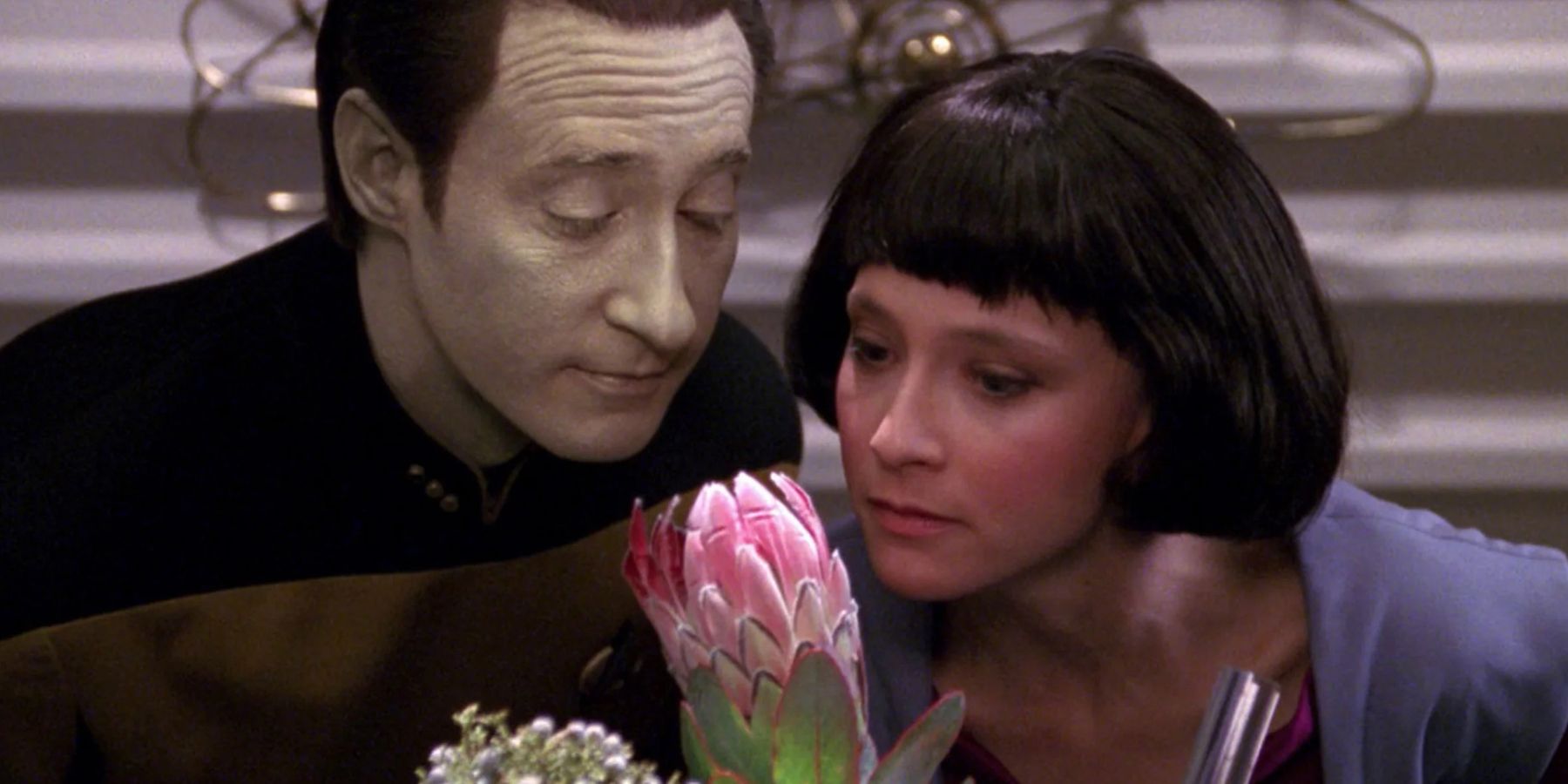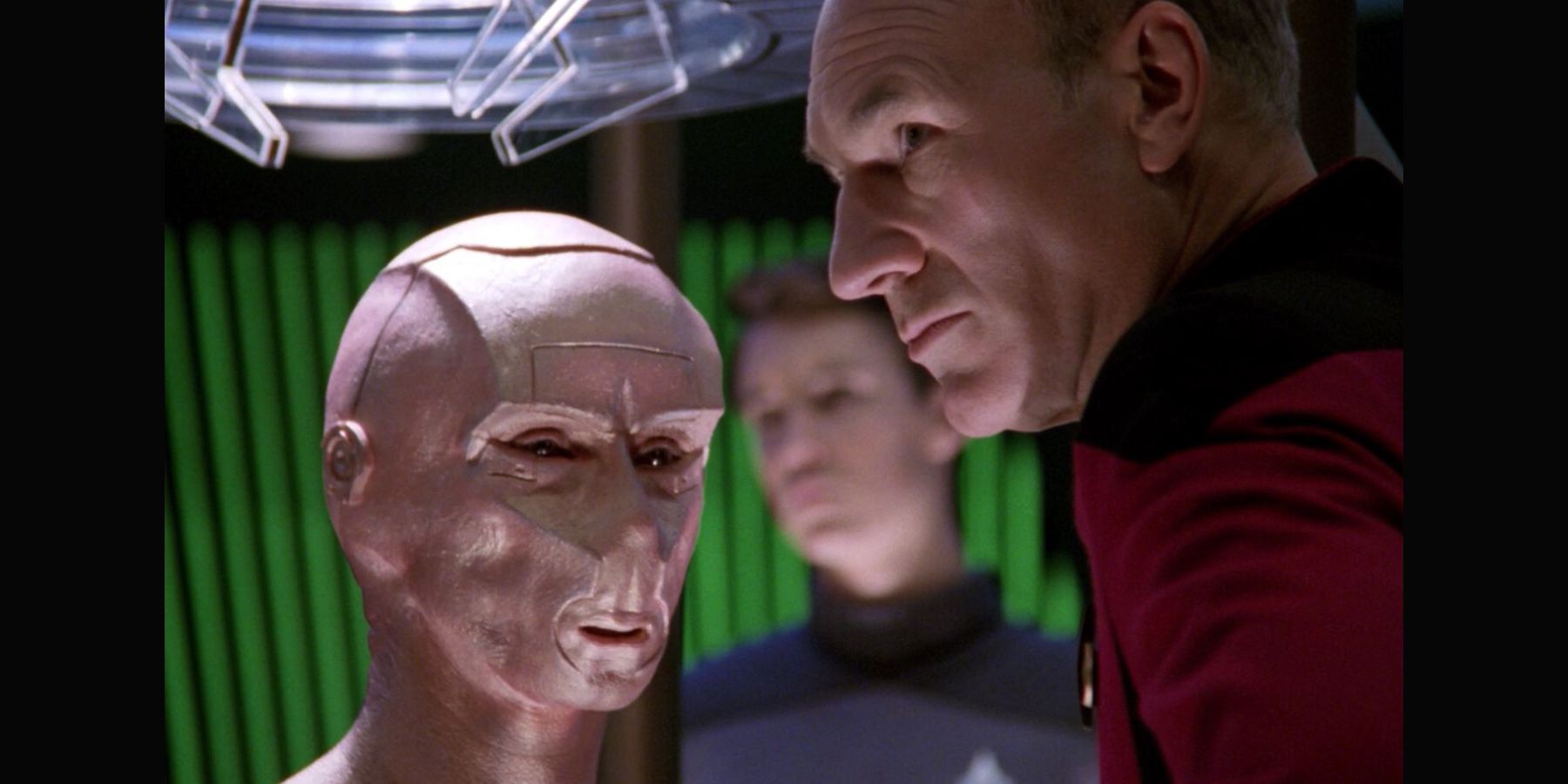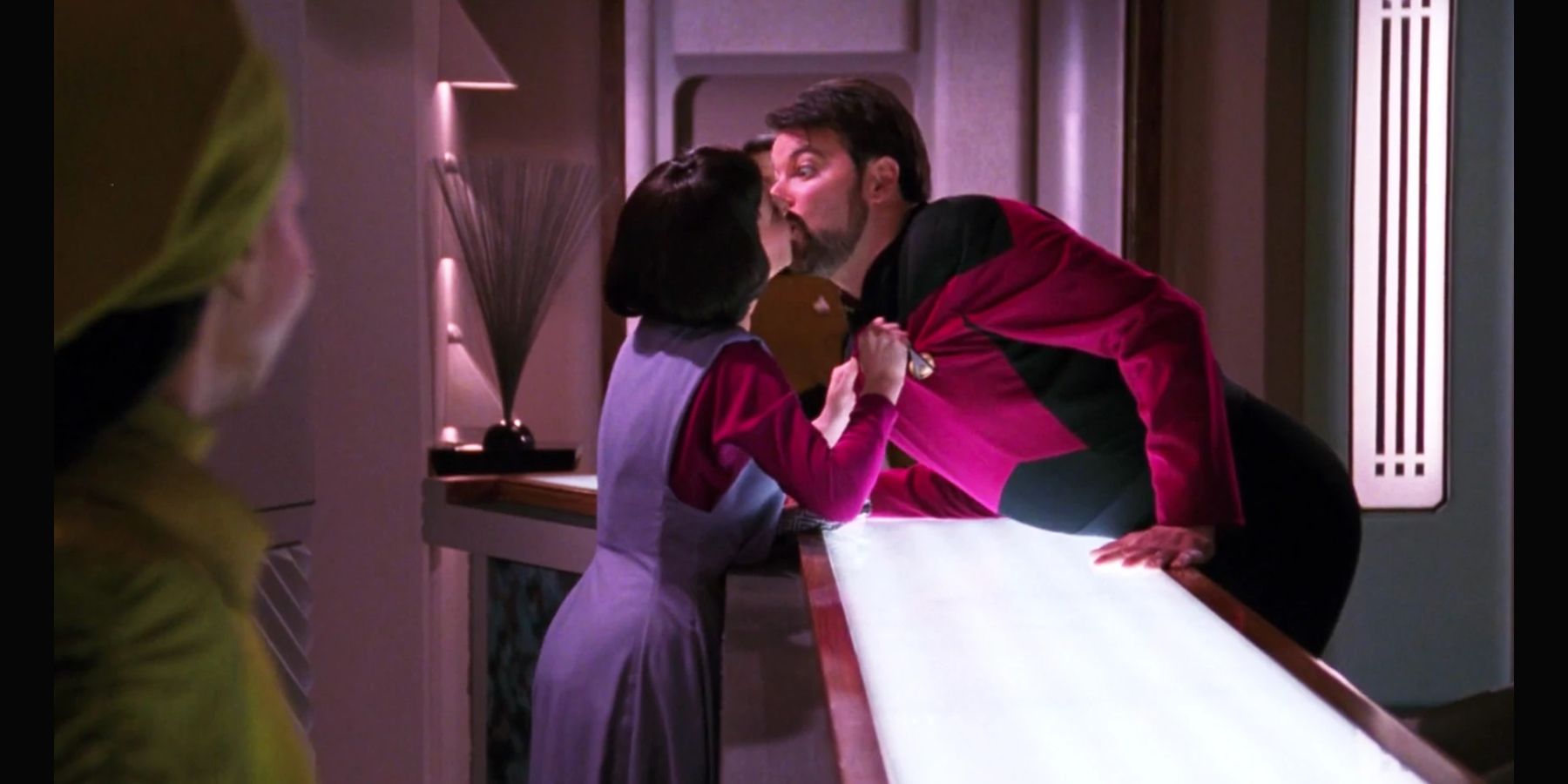Over the years, Star Trek has graced TV screens with a range of highly diverse and interesting characters, from the mind-reading Betazoids to the potentially antisemitic Ferengi. But alongside the alien characters, the shows have always been obsessed with the idea of artificial intelligence. This is likely because of the incredibly interesting quagmire of morality that engulfs them. Can a hologram or an android be alive? It made for proper science fiction viewing, and intrigued viewers.
The biggest catalyst for these questions was The Next Generation's Data and his quest for learned humanity. He was not the only android from TNG era, however. The brilliant evil twin angle was represented by Lore, but the show also themes of love and parenthood through the often forgotten character Lal. Who exactly was she, and what was her relationship to Data?
Lal first appeared in the aptly named episode “The Offspring” from season 3, marking her only appearance throughout the entire franchise. A painting of her appeared later on in the episode “Inheritance,” as well as a photograph in Lower Decks, but other than that she was a one-off character. What made Lal so special was that not only was she a Soong-type android like Data and Lore, but that she was constructed by Data himself in 2366. As a result, she was far more advanced. Data used Soong’s knowledge and expertise, but improved upon it, resulting in Lal exceeding Data’s capabilities tenfold. She was to compute far more information and even feel emotions such as love and fear. While based on the same technology he was built on, the actual use and creation of a stable positronic brain like the one he had was strictly prohibited in the Federation, who feared moral implications of creating highly intelligent, sentient synthetic life. As such, Data used a sub micron matrix transfer technology he learned about from a conference he attended, and using this decided to try and fabricate an offspring.
This being the height of science fiction fantasy, Data of course managed to successfully create a working brain. He called his creation Lal, a name that comes from the Hindi word meaning beloved. There was a large part of Data that was doing this down to scientific interest, but another, more human, side was trying to procreate and have a family, something he had always longed for despite his constant struggles with emotion. He hoped that his child would follow in his footsteps and thus leave him with a legacy after his death, however many years that may be. He hoped that they would join Starfleet and serve aboard a ship like he has and give back to the organization that had given him so much over the years.
Lal starts life in a very basic form, a genderless and simplistic body of humanoid appearance. With the brain installed and working, they are given the choice as to what gender they want, and what they want to look like. Troi, the ship's councilor, decides to help Data in parenting, and helps Lal understand what implications these choices might make, and that, unfortunately, it would affect how people would interact with them. Lal is at first overwhelmed with the choice, not fully understanding why it matters (an incredibly important lesson even today). She at first wants to just mimic Troi’s appearance, which Data refuses as it would be confusing. He decideds to narrow her options, and presented her with four holographic options: a Klingon male, an Andorian female, and a human male and female. She chooses the form of a human female, potentially influenced by Troi and her human appearance. Unlike Data, Lal is given the option of typical skin pigmentation and eye colors.
Lal’s story continues and is a wonderful exploration of learned humanity. In an attempt to help her, Data (at the behest of Wesley Crusher) enrolls her in the ship's school, where things start to go downhill for the android. She doesn't know how to interact with the other children, who either mock her strange nature or scared of her. Seeing her struggle and even get bullied by the other children, Data changes track and suggests she help out in the ship's restaurant/bar Ten Forward under the watchful gaze of Guinan. Up until this point Lal was fairly similar to Data, sharing a lot of the same issues with social interactions and general ‘roboticness,’ but things start to change here as Lal evolves from her original programming. She begins using verbal contractions, and begins to actually feel emotions, though her use of them still left a lot to be desired. In one fairly comical moment, she observes two lovers kiss, and proceeds to manhandle Riker into one herself, despite them only having just met.
Lal's creation is quickly discovered by Starfleet research academy, and it is not long before Vice Admiral Haftel wanted to swoop in and take Lal away for his own cybernetic studies. Lal does not want to leave the Enterprise and her father, and grows increasingly distressed by the situation, something Troi picks up when trying to calm her down. She feels an overwhelming amount of fear from Lal, so intense that her programming detected it as a malfunction. Lal returns to the lab where she was born, where Data ran diagnostics, trying to fix the issue. It turned out to be a cascade failure in her brain, or neural net, and with the help of Haftel they attempted to fix her. Despite this, however, the emotions are too much for her, and there is nothing they could do to save her. As her systems start shutting down, she expresses her love for Data, and her gratitude for giving her life. After her deaths Data transfers her memories into his own brain, so she would be with him always. It's a touching tribute from a character who was so lacking in emotion and feeling.
While this was the last audiences saw of Lal, there might be an opportunity with Picard season 3 and the reintroduction of Lore to bring her back in some way or another. Of course, audiences will have to tune in next year to find out.



